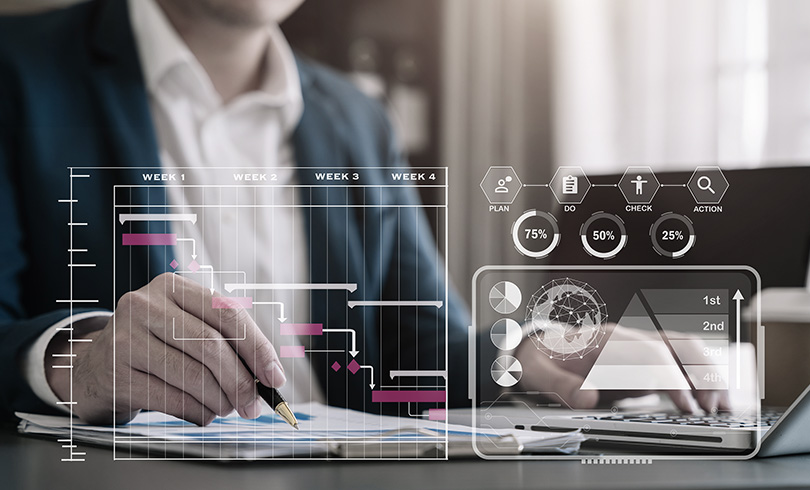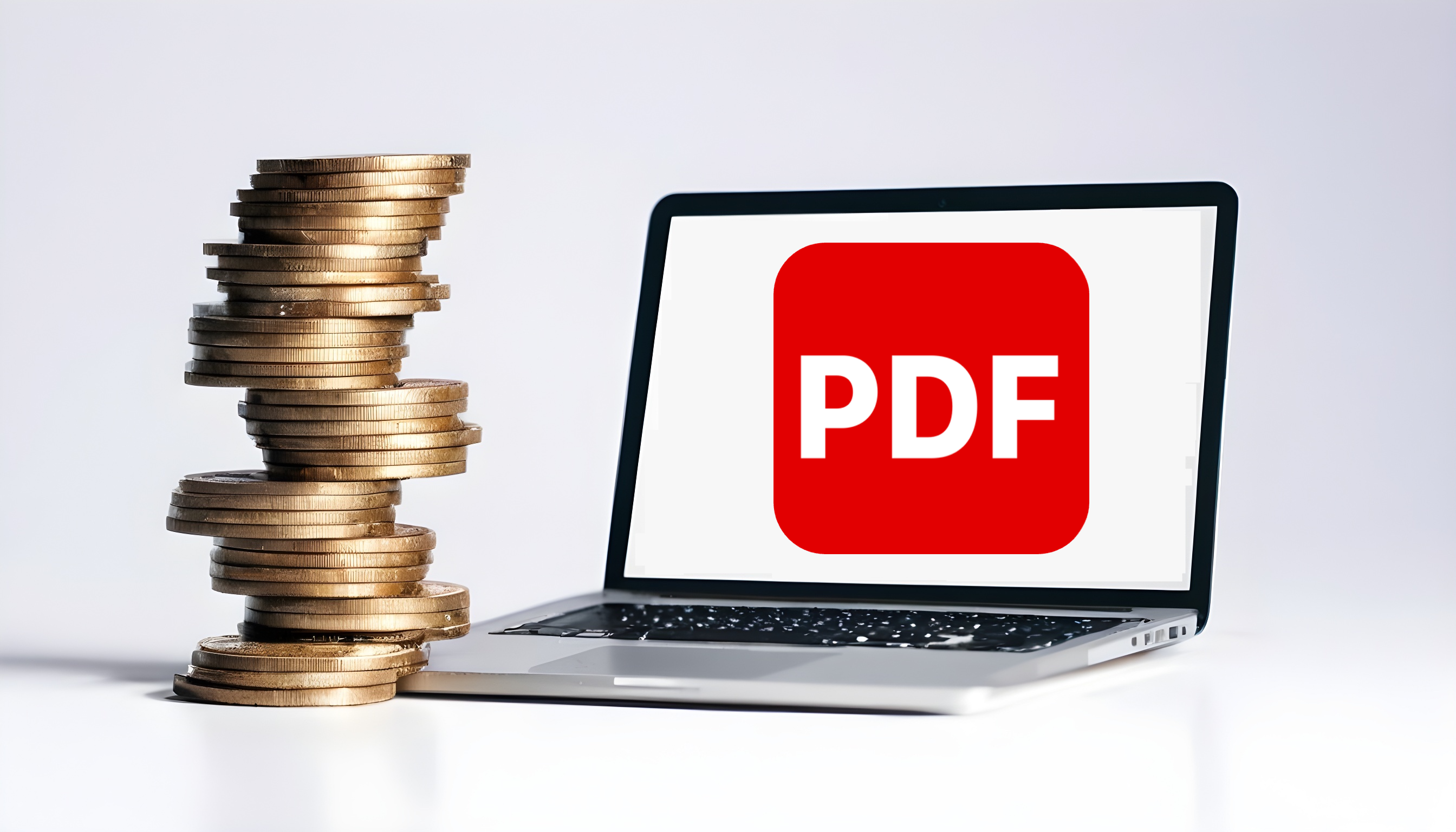ERP for finance: Beyond your ERP systems

Many businesses consider their enterprise resource planning (ERP) system to be the holy grail of their business operations, and rightfully so. Your ERP system often stands as the single source of information and truth regarding the innermost workings of your company.
It's an invaluable tool for any business that wants to centralize its data and boost operational efficiency. However, the actual value of your ERP system lies in the tools adjacent to it. After all, every gold mine needs to be tapped into - and for that, you need the right tools. Otherwise, all you have is a whole lot of potential, with no way to utilize it.
This is especially true regarding Accounts Receivable (AR) Management.
Although ERP systems hold a myriad of benefits for AR management, teams are still often plagued with cash-flow bottlenecks and additional challenges paired with traditional, manual AR processes.
In this article, we're looking at the value of ERP systems for AR management and how to surpass some of the most common roadblocks by leveraging an essential power duo - ERP x AR automation software.
But first, let's look at the distinct differences between an ERP system and accounts receivable software.
What's the difference between ERP systems and AR automation software?
Both AR software and ERP play a critical role in your company's success. However, it's important to remember that they boast distinct differences and advantages.
AR automation software is not the same as your ERP. Here's why:
Traditionally, the AR cycle is considered one of the most resource-intensive processes in an organization, and rightfully so. However, AR automation software aims to change that and is specifically designed to eliminate time-consuming, manual tasks and the challenges (and bottlenecks) they perpetuate. In brief, the role of AR software primarily focuses on automating standard AR processes and tasks.
Your ERP system, on the other hand, is not as flexible or granular, and rather stores critical business data on a large scale in order to manage operations, inventory, and logistics.
Furthermore, ERP systems support all aspects of organizational management, including human resources, supply chain management, and manufacturing.
So, where's the crossover?
The value of ERP systems in financial management
ERP systems centralize your data
When looking at the importance of ERP systems for AR teams, much of the value can be traced back to their data centralization capabilities. Without an ERP, data is often stored in various places and across multiple departments, which is unideal for crunch time, a.k.a month-end (or any time for that matter).
In contrast, an ERP provides one single source of truth and removes the need for AR teams to hunt data in various applications and spreadsheets.
ERP systems standardize your financial data
Another valuable asset that ERP software provides is that it standardizes all your critical data. Since all vital data is in one system, it will also be in the same format.
This makes analyzing the data much easier. Having all the relevant data in one standardized format streamlines workflows and allows AR teams to gain valuable insights regarding collections, cash flow, and revenue.
The benefits of an ERP are undoubtedly valuable when it comes to elevating AR processes. Yet, many AR teams still face cash flow challenges. Here's why.
Common challenges AR teams face (even with ERP systems)
Ultimately, ERP systems are designed to provide value at an organizational level and are often used for risk management, inventory management, and supply chain management.
However, regarding the more granular challenges that AR teams face daily, there is very little an ERP can do to help, especially if the company continues to rely largely on manual processes that are known for draining resources, time, and revenue.
Specific challenges include:
1. Late payments
According to a recent study, 93% of companies experience late payments from customers. This can stem from a variety of factors. However, the value of your ERP software has very little to do with it. Late payments and high DSO often stem from a variety of factors, including inefficient collections processes, complicated payment options, communication bottlenecks, or invoice misapplications.
2. Poor communication channels
The collection process heavily relies on clear and transparent communication between AR teams and customers. However, this is rarely the case when the majority of AR teams still rely on legacy systems to communicate with customers. Often, AR teams are required to communicate with clients via multiple channels, often leading to poor cash management and delayed or drawn-out collection processes.
3. Frequent misapplication of payments
Even with an ERP in place, many AR teams still rely on manual cash application processes. This significantly increases the risk of applying payments incorrectly. This then leads to AR teams having to spend more time doing account reconciliation and can impact customers' credit availability.
4. A lack of real time data
One of the greatest challenges that AR teams face is the lack of visibility into customer-specific data and financial analytics. Without the right tools, AR teams struggle to gain insight into the accounts receivable process as a whole, often leading to issues going undetected and a lack of insight on how or where to improve collections. This can make things like tracking the progress of invoices, monitoring customer payment histories, and identifying possible concerns much more difficult.
Needless to say, even with an ERP solution - there are multiple challenges when it comes to traditional accounts receivable collections. So what's the solution? How can businesses elevate their AR processes in order to free up their capacity, reduce DSO, and streamline financial reporting?
The answer is AR automation software - the AR-shaped puzzle piece that connects and supports your ERP system.
Incorporating AR software
Let's face it: efficient AR management is the cornerstone of quick and smooth incoming payments. These AR processes work best when they can seamlessly connect and leverage business processes and systems. Your ERP system plays an essential role in storing and organizing the necessary data. But data (as we've come to realize) is only as valuable as the tools set in place to leverage and apply said data to relevant business operations.
This is where incorporating AR automation software comes in. AR automation software, as a whole, offers the granular level of features that AR teams need on a daily basis. Although ERP systems can support some AR tasks, they often lack the functionality needed to deal with all the nuances and challenges of the AR cycle. Due to this, AR automation software focuses on:
- Automating manual AR tasks
- Improving visibility into invoicing status
- Predicting payer behavior and identifying potential non-payment risks
- Providing customizable dashboards for invoice and payment tracking
- Meeting customer demands for digital ways of doing business
The power duo: ERP software and AR automation
The right AR automation software supports your ERP platform by extracting AR data for efficient processing and reporting. Software like System1A do this through a data extraction tool that has read-only access to your business's ERP system, enabling it to read information for use without being able to write or manipulate any ERP data.
Once the software has connected to the ERP system (in only 45 minutes with System1A), businesses can immediately leverage one application to manage all their AR business needs, such as company accounts, communications, deliveries, interactions, payments, receipts, and reporting.
But there are many other reasons why this type of integration is invaluable, such as:
1. Streamlined payment processing
The AR software and ERP combo provide AR teams with a single platform to monitor collections across the entire organization. This significantly expedites the AR workflow, as AR teams can send invoices, get paid, follow up, and communicate with clients all within one platform.
Moreso, the entire process is managed, viewed, and analyzed from one single source of truth, allowing greater transparency between AR, clients, and upper management.
2. Improved customer experience
Maintaining healthy client relationships shouldn't come at the cost of timely payments. Fortunately, it doesn't have to. AR software integrations for your ERP system focus on client experience as much as it does on the working lives of your AR team. In brief, streamlining the payment process and making it easier for clients to make payments makes it more likely that they will pay on time.
3. Improved cash flow management
Ultimately, it all boils down to healthy (and predictable) cash flow, which is why one of the quintessential features of AR automation is working smarter (not harder) to boost cash flow. Through improved client management, streamlined workflows, real-time data, and resource application, AR teams can shift their focus to tasks that will enhance financial planning and bypass the common bottleneck of manual AR processes.
Better yet, with the additional time comes the added benefit of rich data, analytics and insights at your fingertips, helping the finance team make better decisions regarding payment trends, forecasting, and accurate real-time collection data.
What ERP Systems does System1A support?
- Batchmaster
- Epicore
- IFS
- Infor
- IQMS
- Microsoft
- Microsoft Navision
- Microsoft Dynamics AX
- Multiview
- Oracle Netsuite
- Omni Accounting
- Palladium
- Plex
- QAD
- Sage
- Sage 100 / Pastel Express / Pastel Partner
- Sage 200 / Sage Evolution
- Sage 300 / Accpac
- Sage One/Sage Cloud Accounting
- Sage X3
- SAP
- SAP Business One on SQL
- SAP Business One on HANA
- SAP ECC6
- Syspro
- Xero
System1A to elevate your financial management
Are you ready to tap into unparalleled cash flow management while elevating operational performance?
You're in the right place.
At System1A, we provide Financial Information Symmetry integrated with Account Management Tools to help AR teams prioritize business-critical tasks without worrying about day-to-day roadblocks.
Leverage AR automation benefits and effective, strategy-led processes with System1A as your go-to tool to improve cash flow, customer satisfaction, and the overall AR process.
<<Book your demo here>>


















